FALL 2019 | WEEK 4
Recreation Week!
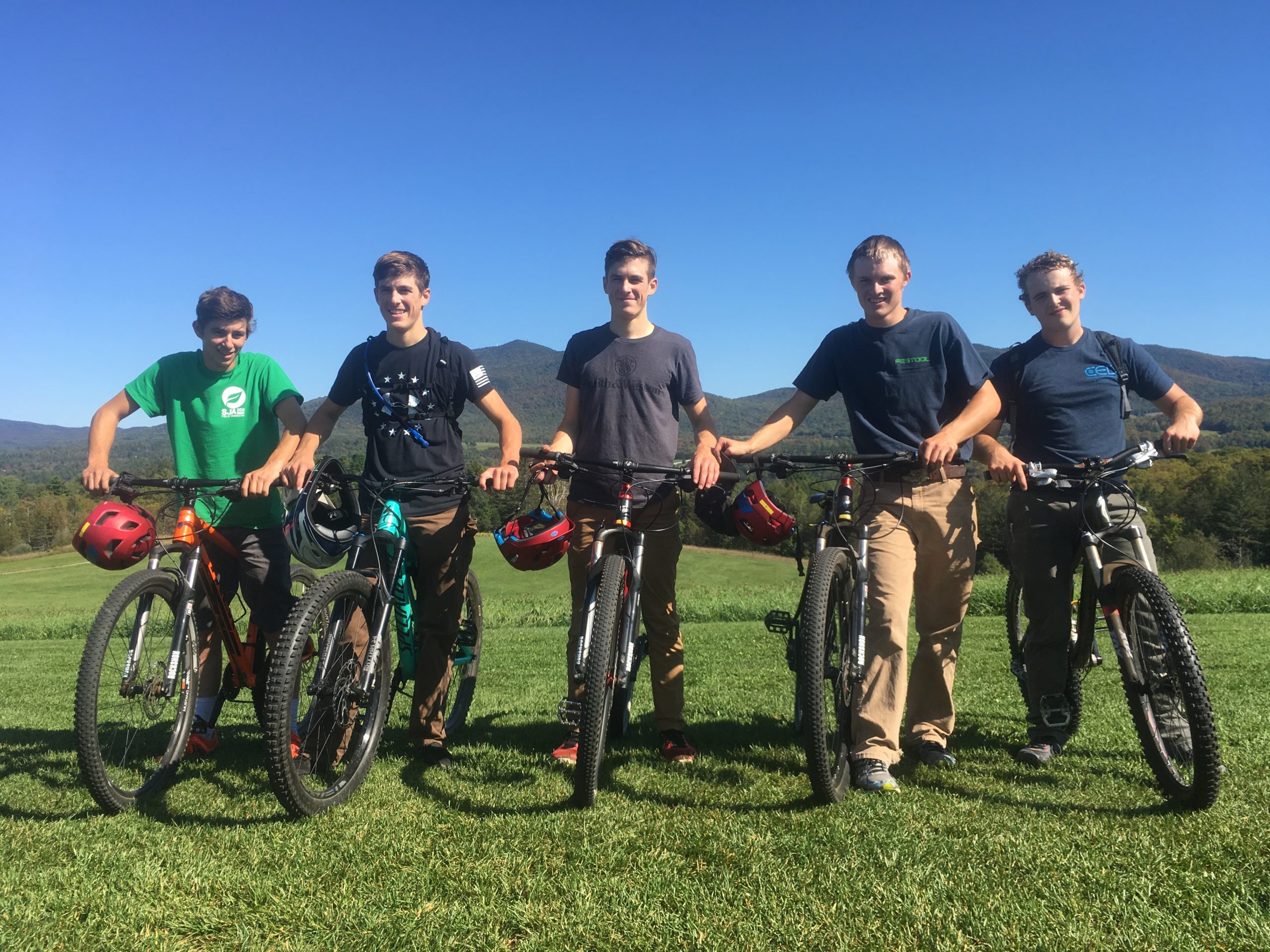
By Jessica Bakowski
Students in the Field Semester explored the beautiful landscape of the Northeast Kingdom this week as we began into our outdoor recreation unit. Many of our students experienced mountain biking on the Kingdom Trails network for the first time. Students also had the opportunity to work with Trail Manager CJ Scott the trail crew members Matt and Corey, who are responsible for creating and maintaining these trails. Students specifically repaired footers on bridges on the Burnham Down trail, replacing log footers that protect wet soils from compaction and bridge decking from rotting. Within the larger framework of this project, students explored how Kingdom Trails works to mitigate the environmental impacts of the trail network. They learned about soil structure, sustainable trail design techniques, and the impacts of trails on wildlife habitat. We also discussed how multiple uses of forested property, such as forest harvest and recreation, can co-exist through proper management techniques.
Students also got to meet and interview Kingdom Trails Executive Director Abigail Long on Tuesday to discuss the social and economic impacts of the trails in the local community and plans for sustainable growth. They also learned about a USDA-funded feasibility study that looks at aspects of overcrowding and how to accommodate the increased interest in the recreational opportunities in the area. Since Kingdom Trails depends on local landowners to create an interconnected trail network, relationships with the community are critical.
Students closed the week with a cross-curricular trip to Burtt’s Orchard with students from SJA’s Culinary program. Orchard owner Greg Burtt stressed the importance of relationships with his visitors to the “U-pick orchard.” He described the busy fall weekends and described how he encourages visitors to taste and eat apples off the tree even if it translates into a slight economic loss. He stressed that the key to a successful business was visitor experience, and that apple picking in the fall in Vermont was another draw to the area that improved our communities and encouraged people to engage with their environment.
While it is easy to take this area for granted, we do live in an exceptionally beautiful and diverse region. This week students both enjoyed some of the recreational activities available, and also learned about what goes into providing these opportunities to visitors and what environmental, social, and economic impacts these pursuits have on our region.
Tuesday, 9/17
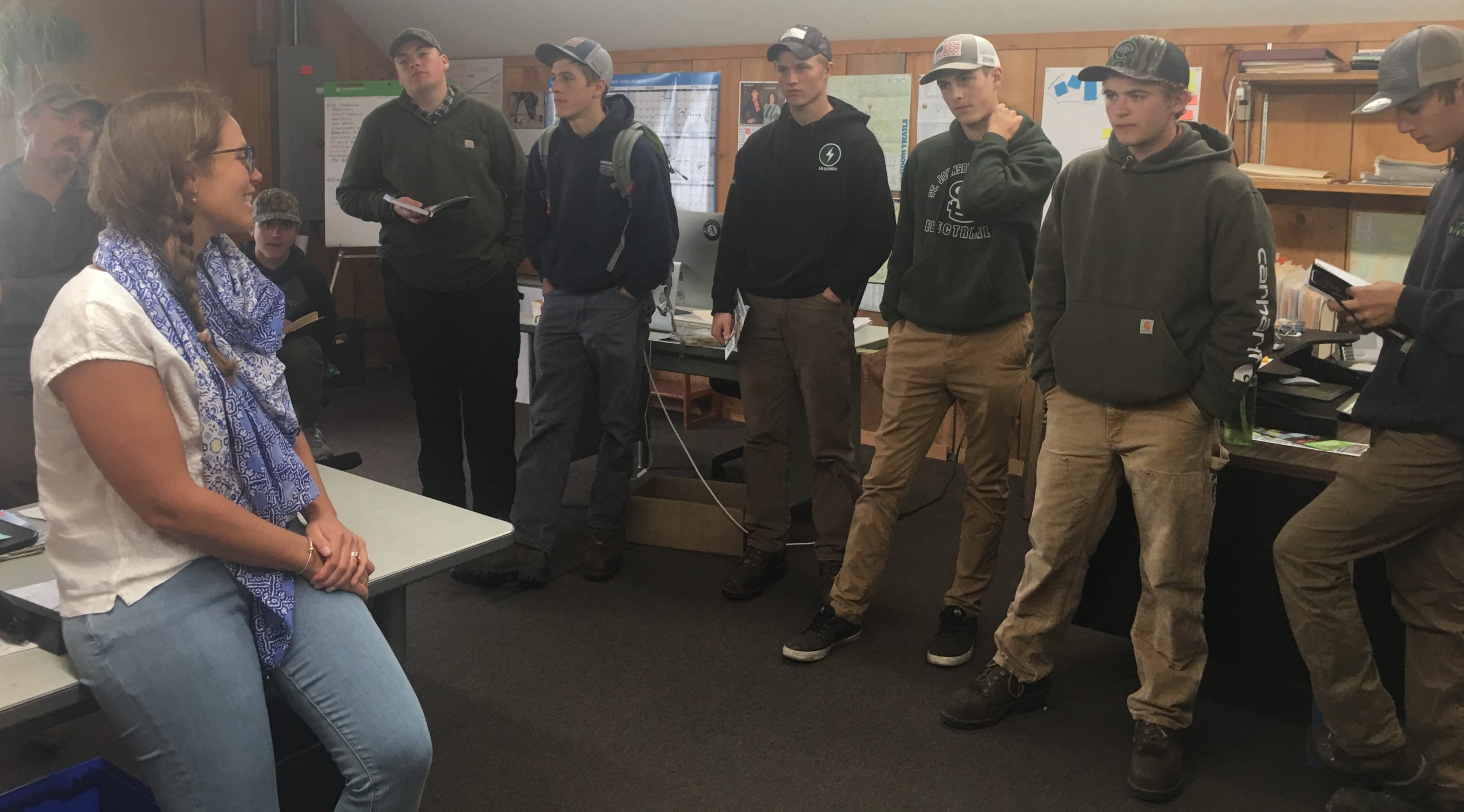
On Tuesday morning we went to the Kingdom Trails office in East Burke to meet Abigail Long to discuss the social and economic impact of Kingdom Trails in the local community. Abigail explained that Kingdom Trails is a mission-driven organization, with a focus on economic development, sustainable resource management, and education. Abigail stated that Kingdom Trails has an average of around 135,000 visitors annually, 84% being from out of state. Around 75% of those visitors stay overnight and spend $115 per day on average, creating an economic boom in Burke and surrounding communities. Kingdom Trails is open year long (except for deer season) and allows many different kinds of recreational activities including snowshoeing, skiing, and mountain biking. Because of this, there is a relatively steady flow of visitors coming and going throughout the year.
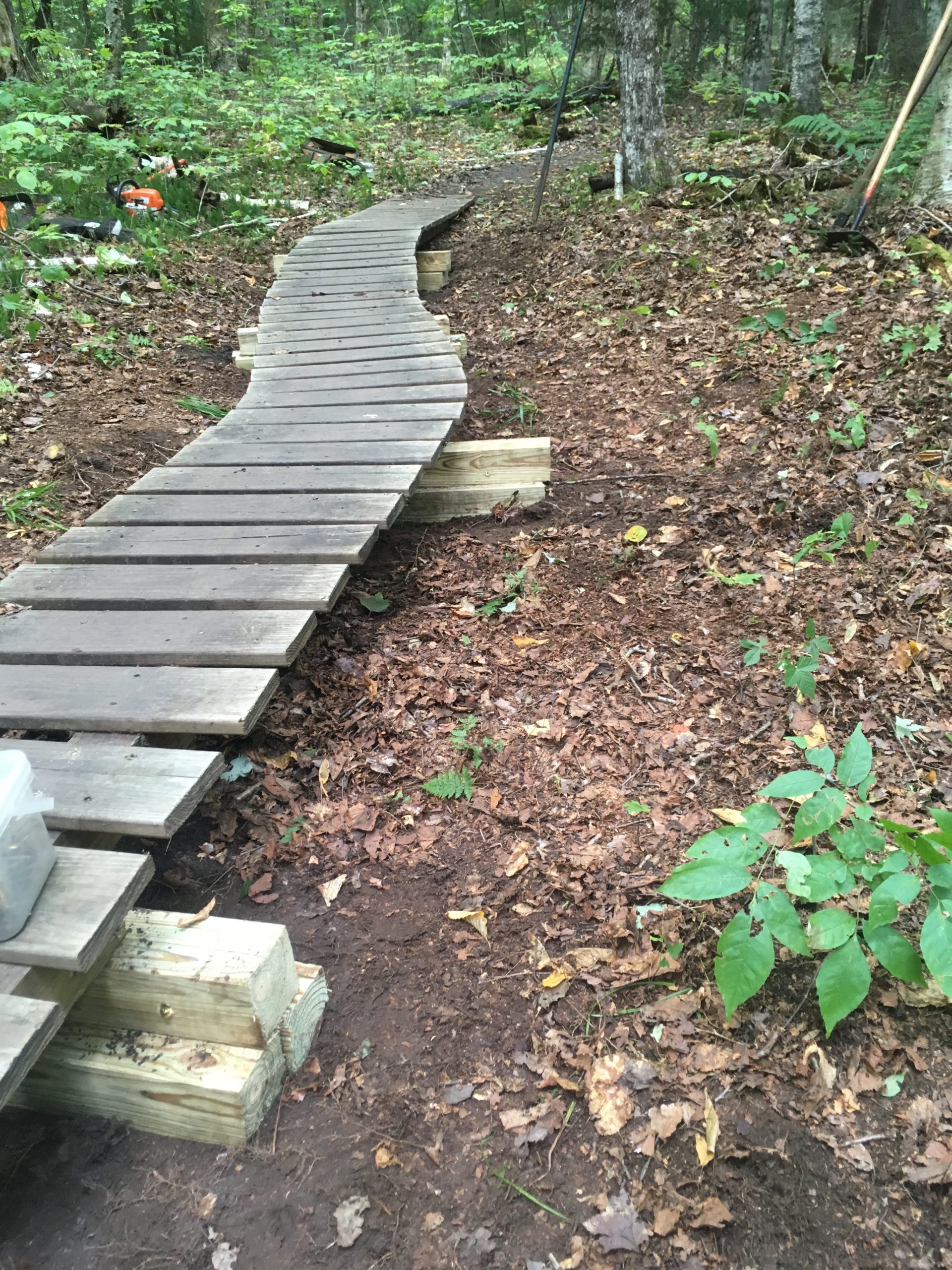
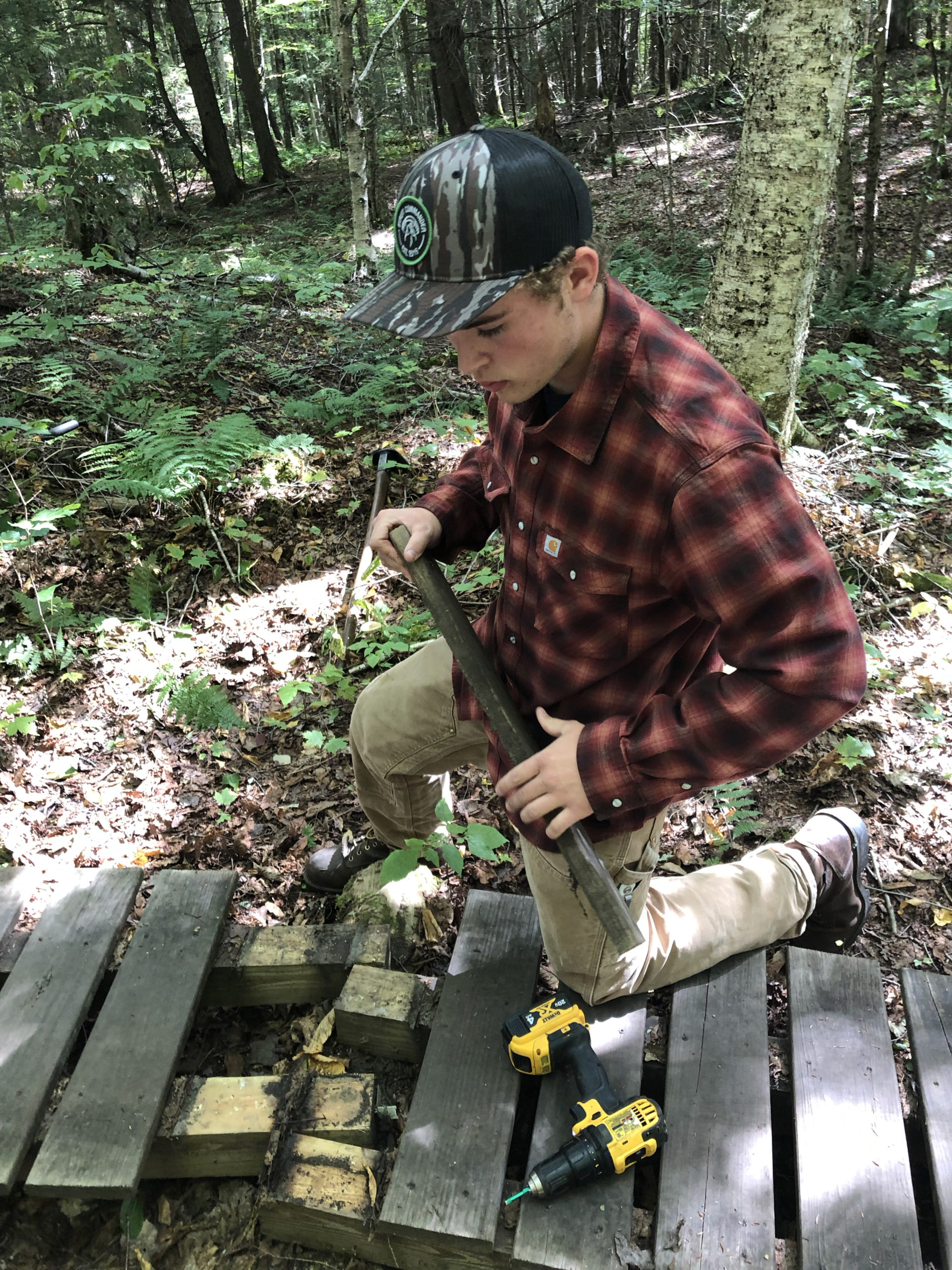
After our visit to the Kingdom Trails office, we started working on the Burnham Down trail replacing bridge footers. Footers are the boards that the bridges rest on to keep it off the ground. We replaced the old cedar log footers with 4×4 pressure treated footers. The way we were able to keep the same level footer was by stacking three 4×4’s, making a pyramid that approached the same height as before. We also had to level the ground out underneath the footer so the bridge maintained its original height. Using tools like a McLeods, Rogue hoes, and rakes, we were able to achieve level footers for the trail. In this picture, Cole removes bridge decking in preparation for footer replacement. After two half-days of work, we had replaced footers on about 200’ of bridge. -Jon
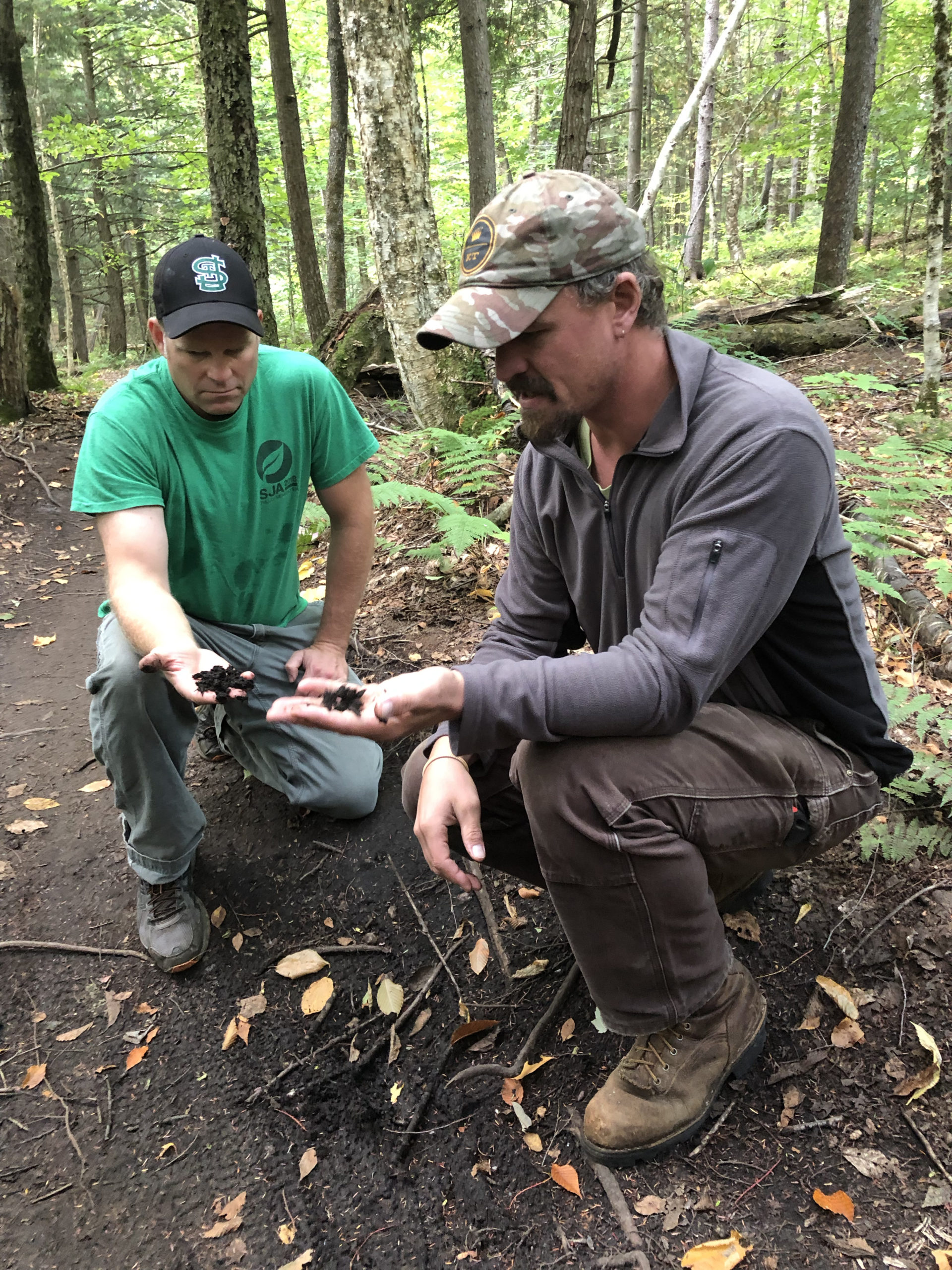
In this picture, CJ Scott, Trail Manager at Kingdom Trails, is talking with Mr. Bentley about what type of soil is ideal for a sustainable trail. The soil that CJ has in his hand is poor soil because it does not drain water well, and water is a big enemy to a sustainable trail. We learned which soils are the best types to have and why, and also what kind of mixtures of soils you want. Sand is a good soil to have for trails because it drains well and doesn’t hold the water, but it doesn’t hold the trail together very well. A mixture of sand for the draining and some clay for binding helps to hold the soil structure together while also making sure that water drains off of the trail.
Wednesday, 9/18
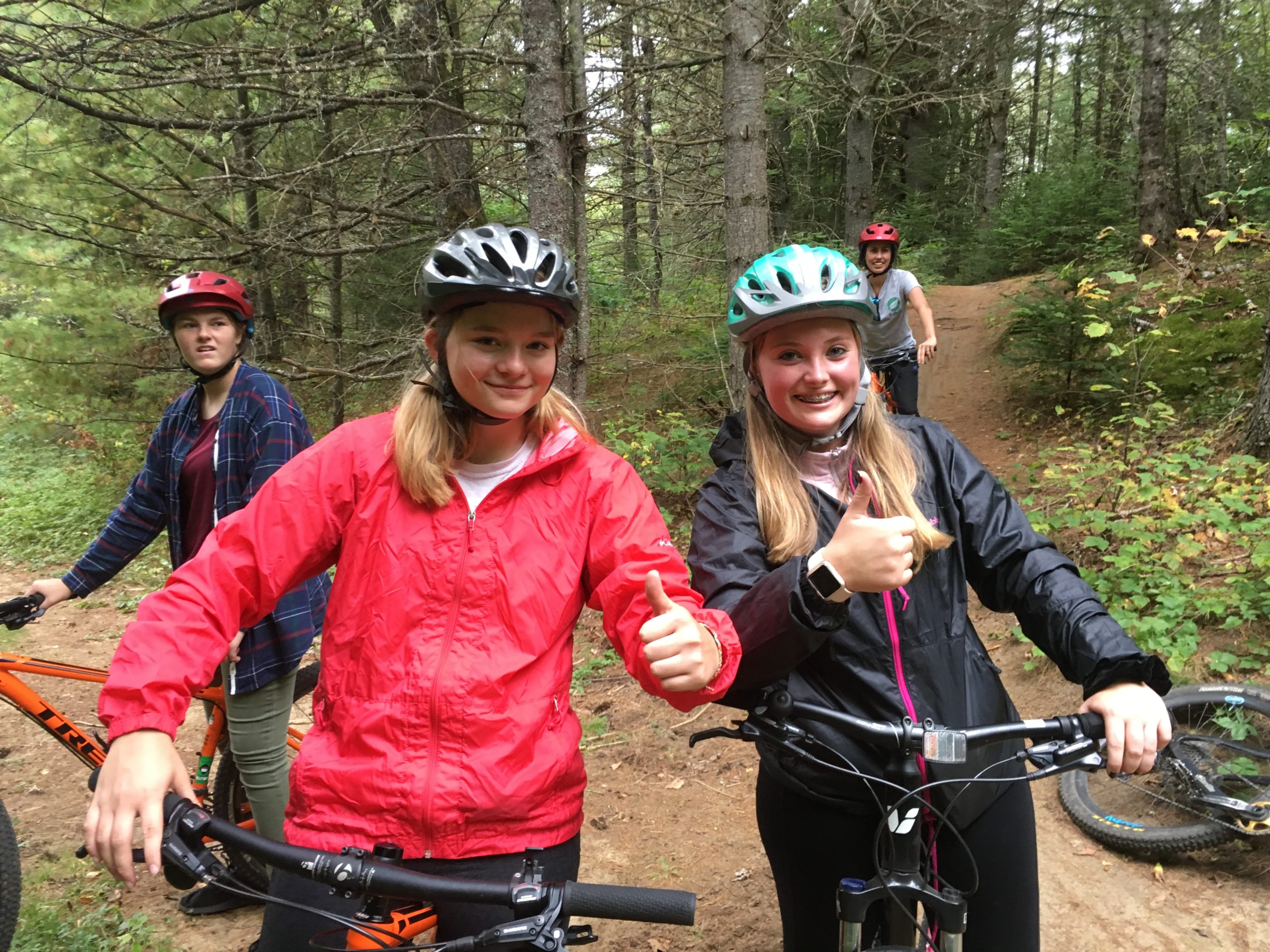
On Wednesday we went mountain biking on Kingdom Trails. We rode the trails such as Tody’s Tour and Burrington Bench in order to get a better understanding of how sustainable trails are constructed. The trails are well-marked by signs that indicate whether the trail is easy or more difficult. We split into two groups by skill level, allowing for everyone to get a chance to enjoy the trails at their own pace. In our group we discussed the different types of soil that make the best trails for riding. We also notice how grade reversals are used to combat erosion while also making the trails more fun to ride. Switchbacks were another feature that we encountered. These allow for a reduced trail grade that makes a trail easier to climb while also preventing erosion. These techniques were used when the trail is being designed and built.
Thursday, 9/19
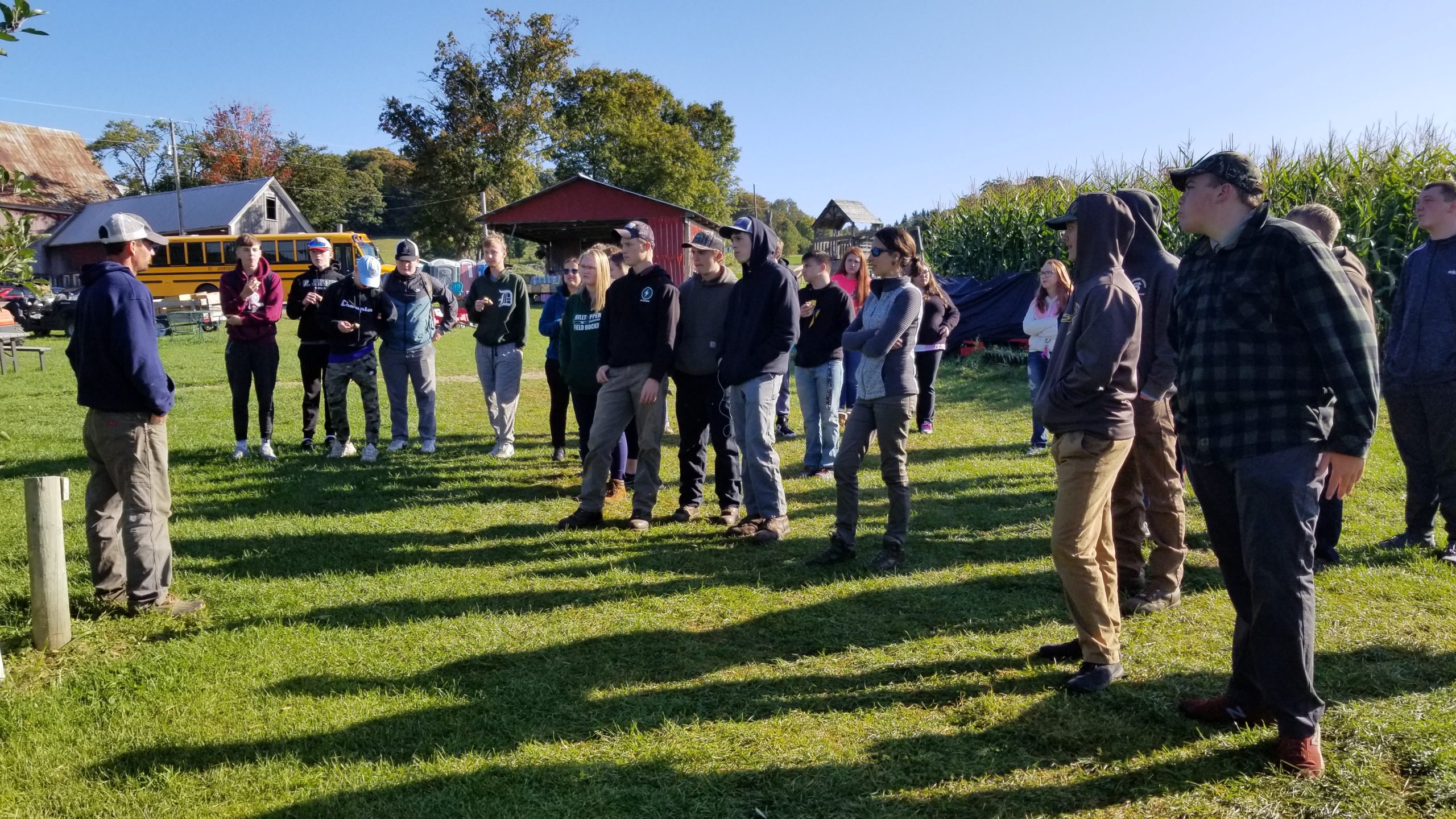
On Thursday we went up to Burt’s Apple Orchard in Cabot, Vermont. We joined the Culinary class on this site visit. When we first got there, the owner Greg Burtt talked to us different aspects of his operation. He prunes the trees in February, using an electric trimmer. After pruning, he burns what he has cut because in years past he learned that any disease the trees might have could live and spread if he simply chipped them. Greg’s busiest time is the weekends, when he sees about a thousand people per weekend. After we talked with Greg we were able to walk around and pick apples. Once we were done gathering apples, we returned to the Field Campus with the Culinary students and their teachers.
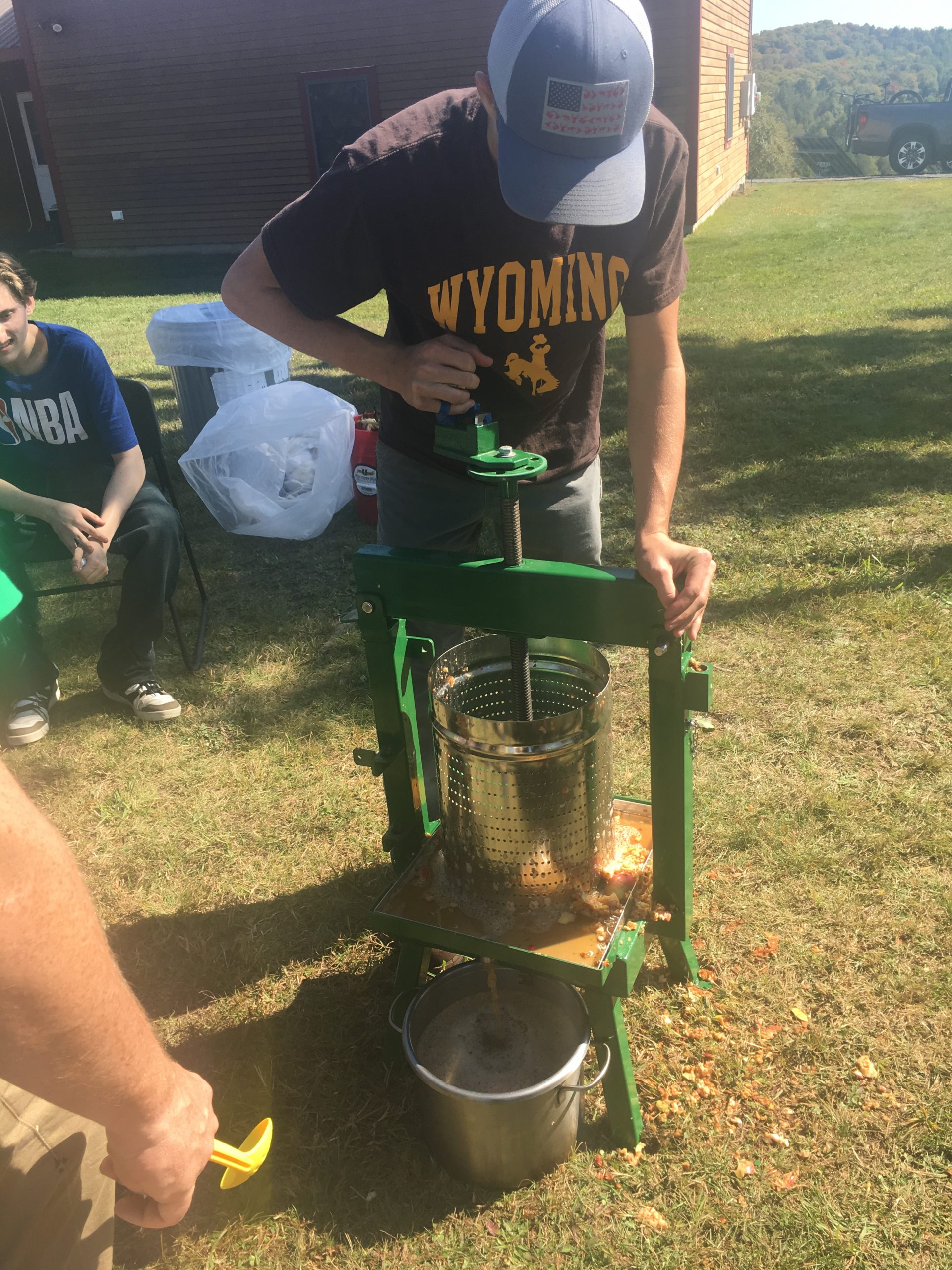
When we returned to the Field Campus we had the best lunch of the semester! The Culinary class had prepared and brought many dishes with them, including paninis, cooked corn, chili, and apple crisp with ice cream. After we ate, we split into two groups, with the Field Semester students leading Culinary students around the Field Campus to pick blackberries and learn a little about what we do. The other group got to work pressing apples for cider, working to make enough cider for everyone. It was great to share the Field Semester experience (and cider) with some other students.

